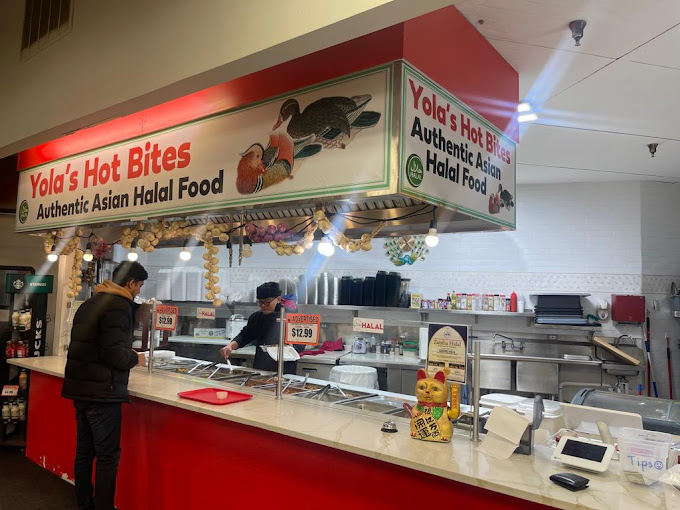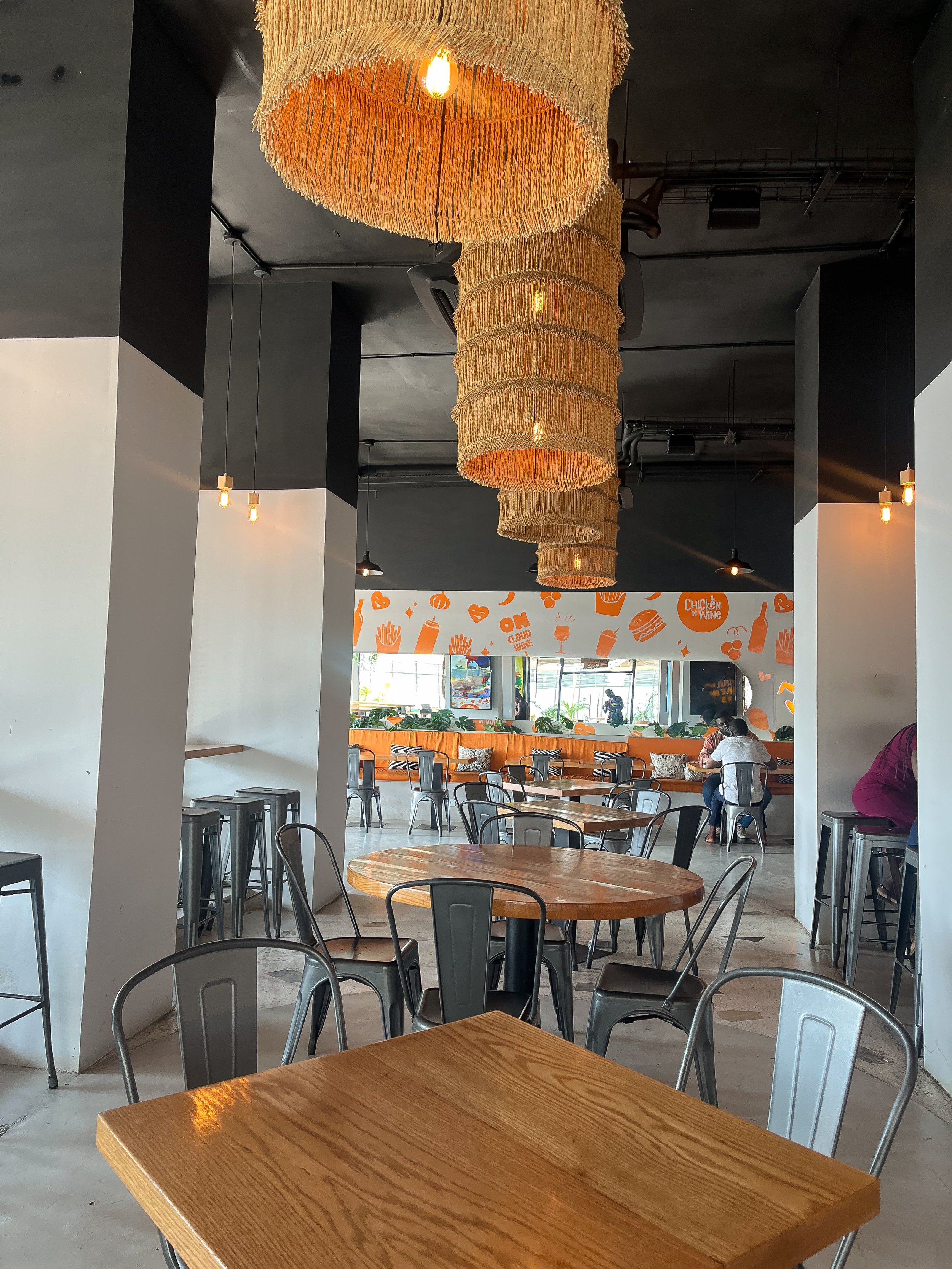Savor Genuine Eastern Food With a Pan-Asian Twist for a Culinary Journey
Embarking on a culinary journey through authentic Oriental cuisine, improved with a Pan-Asian spin, provides an one-of-a-kind opportunity to explore the abundant tapestry of tastes that specify the area's varied culinary traditions. This experience invites you to enjoy the exquisite equilibrium of tastes-- sweet, salty, spicy, and sour-- balanced by fragrant herbs and spices. Imagine the innovative blend of Thai curry and ramen or the unanticipated joy of sushi burritos. As you consider these tempting dishes, think about the social narratives and historic impacts that form them, each bite supplying a tale waiting to be discovered.

Discovering Pan-Asian Tastes
In the realm of worldwide gastronomy, Pan-Asian cuisine stands out for its impressive diversity and the unified interplay of tastes from different Asian cultures. This cooking approach commemorates the special components and abundant traditions discovered across the continent, producing a tapestry of preferences that is both fascinating and rewarding. Secret to Pan-Asian food is its ability to stabilize contrasting tastes-- wonderful, salted, spicy, and sour-- while highlighting the freshness and high quality of each active ingredient.
From the umami-rich soy sauce of Japan to the fiery chili peppers of Thailand, Pan-Asian cuisine uses an extensive palette of tastes. These components are frequently integrated in creative means, enhancing dishes with layers of complexity. As an example, using great smelling natural herbs such as lemongrass and cilantro, usual in Vietnamese and Thai cuisine, adds a rejuvenating illumination to recipes, while the incorporation of coconut milk delivers a creamy, rich structure.
The emphasis on fresh produce and aromatic flavors makes sure that each dish is not just a banquet for the taste however likewise for the senses. Pan-Asian cuisine invites restaurants to get started on a cooking trip, discovering the huge and differed landscapes of Oriental gastronomy with every bite.
Fusion Dishes to Try
While Pan-Asian food is celebrated for its typical flavors, the modern-day culinary landscape is significantly accepting blend meals that blend these timeless aspects with influences from other regions. This cutting-edge approach not just honors the abundant heritage of Oriental cookeries but additionally introduces novel preference experiences that appeal to modern tastes.
A prime example of such a blend dish is the Korean-Mexican taco, where marinaded bulgogi beef is covered in a warm tortilla, topped with kimchi and a hot gochujang-infused salsa. This mix marries the strong, savory tastes of Korea with the vivid, fresh elements of Mexican cuisine. In a similar way, sushi burritos have gotten popularity, integrating the delicate virtuosity of Japanese sushi with the passionate, hand-held ease of a burrito, commonly including combination active ingredients like tempura shrimp and avocado with a drizzle of wasabi mayo.
Another significant recipe is Thai curry ramen, which infuses the velvety, fragrant seasonings of Thai curry right into the comforting broth of conventional Japanese ramen, producing an unified mix that entices the detects. These fusion dishes extend beyond mere novelty; they represent a culinary discussion in between cultures, urging expedition and advancement worldwide of Pan-Asian food.
Important Components and Flavors
To absolutely value Pan-Asian food, one need to comprehend the vital ingredients and seasonings that create its foundation. This diverse cooking design draws from a rich tapestry of Eastern practices, utilizing a harmonious mix of structures and tastes.
Fragrant elements are critical, with garlic, ginger, and lemongrass being common across various Pan-Asian dishes. These ingredients give a great smelling base that enhances the complexity of tastes. Spices such as star anise, cardamom, and cinnamon present warmth and character, echoing impacts from regions like China and India.

Food Preparation Strategies and Tips
Mastering the art of Pan-Asian cuisine needs knowledge with its distinct cooking techniques, each contributing to the vibrant tapestry of flavors this culinary practice is commemorated for. Central to these methods is the stir-fry, a rapid cooking method that protects the nutritional stability and dazzling colors of active ingredients. Using a frying pan, the stir-fry technique enables also warmth circulation, vital for accomplishing the particular appearance and taste equilibrium of Pan-Asian meals.
An additional essential method is steaming, specifically widespread in Chinese food. This this website mild technique preserves click the natural flavors and nutrients of ingredients, making it perfect for seafood and vegetables. Dumplings, a beloved staple, typically take advantage of steaming, leading to soft, delicious structures.
Barbecuing, likewise important, gives great smoky midsts to recipes such as Oriental bulgogi or Japanese yakitori (Chinese food Islamabad). This strategy usually entails seasoning active ingredients, enabling flavors to permeate deeply prior to food preparation over an open fire or warm plate
Last but not least, mastering the art of balancing tastes-- pleasant, sour, salted, bitter, and umami-- is critical. Effectively layering these components can boost a meal from ordinary to phenomenal, using a complex and pleasing cooking experience that embodies the significance of Pan-Asian cuisine.
Eating Experiences Worldwide
Throughout the globe, Pan-Asian food uses an exceptional eating experience, celebrated for its abundant tapestry of tastes and vibrant presentations. This cooking phenomenon has actually transcended social limits, recording the hearts and tastes of food enthusiasts worldwide. In worldwide cities like New York, London, and Sydney, Pan-Asian restaurants serve as fusions where culinary customs from Thailand, Japan, China, and past converge, providing restaurants with an eclectic mix of meals that highlight the area's diversity.
The worldwide charm of Pan-Asian food depends on its capacity to supply both authenticity and development. Cooks skillfully wed traditional ingredients such as lemongrass, soy sauce, and miso with contemporary strategies, resulting in dishes that are both familiar and refreshingly kfc chicken new. This combination allows restaurants to start a cooking trip that respects heritage while embracing modernity.
Furthermore, dining experiences are raised via attentively designed settings that mirror the ethos of Pan-Asian visual appeals. From minimalist Japanese-inspired insides to lively Thai-themed areas, each restaurant uses a special atmosphere that matches the culinary offerings. As an outcome, customers are not simply consuming a meal yet partaking in a social experience, making Pan-Asian eating a genuinely international sensation.
Verdict
The exploration of Pan-Asian cuisine offers a profound understanding of the intricate interaction of tastes and cooking practices across Asia. By accepting combination meals such as Thai curry ramen and sushi burritos, the culinary journey not just highlights the flexibility of traditional ingredients but likewise showcases ingenious modern strategies. This gastronomic adventure, improved by essential flavors and cooking approaches, gives a special opportunity to value the social diversity and culinary artistry that define Pan-Asian food on a global range.
Embarking on a cooking journey with authentic Oriental cuisine, enhanced with a Pan-Asian twist, provides a special possibility to discover the abundant tapestry of flavors that specify the area's diverse cooking customs.In the world of worldwide gastronomy, Pan-Asian food stands out for its impressive diversity and the unified interplay of flavors from different Asian cultures. Trick to Pan-Asian cuisine is its ability to stabilize contrasting tastes-- wonderful, salted, spicy, and sour-- while highlighting the freshness and high quality of each active ingredient.
